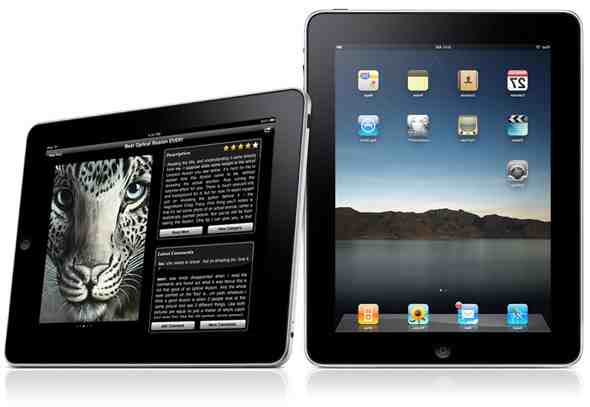The iPhone and iPad: Apple’s Dynamic Duo
The iPhone: When the iPhone was first unveiled in 2007; it quickly became the must-have phone for techies and casual gadget users alike. The first full touchscreen smartphone with extensive app support, the iPhone was cutting edge, sleek and highly coveted. Now on its fifth model, Apple still enjoys fevered speculation and anticipation when they announce new iPhones. The iPhone did to the smartphone market what the iPod had done for mp3 players and, three years later, the iPad followed suit.
The iPad: Released in 2010, the iPad set out to invigorate tablet computing. Previously, tablets had a reputation of being developed for business users and techies, and they had little appeal for the average consumer. However, the iPad changed the image of tablets as it was marketed as a multi-functional entertainment device for users of all ages. Owners can play games, read books, watch movies or just casually browse the Internet, all with simple gestures and clicks. This amazing Apple gadget proved that tablet computing was not a niche market.
The Similarities Between the Two Devices
The iPhone and the iPad are very similar in their functionality. Aside from the home, volume and power buttons, the touch screen wholly controls them both, and they both share the same accessible gestures and commands. The app market is also shared and, although some apps are designed for one device, more often than not there is compatibility of apps for both iPad and iPhone.
With regards to hardware, the same Dual-core Apple A5 processor and graphics-processing unit powers both devices. The iPhone has much better front and rear-facing cameras with 8MP and HD capabilities compared to the iPad, while the iPad has a much larger screen.
What’s Different?
Although both devices can do much of the same things, it is unfair to say that the iPad is simply a bigger version of the iPhone. The size of the screen completely transforms the usability of both devices. The iPhone is designed, simply, to be more on the go because it is a phone. It has a better camera because it is more practical to take pictures with a phone. Likewise, users cannot make calls on an iPad because it is unfeasible, and most users will prefer to watch a film or play a game on the iPad because of the bigger screen.
Do People Need Both?
With a combined price tag of over £800, buying both devices can be a costly decision. However, many users can benefit from having both devices. If they need a smartphone in their everyday life to access the Internet, take photographs and make calls and send messages, then the iPhone is still one of the best smartphones available. If the same user also likes watching movies and playing games, and will benefit from the accessibility, usability and size of the iPad over, for example, a laptop, then both devices would be a good purchase. It really depends on the user and, although both devices are similar, they each have their own distinct differences, which greatly change their purpose and use.


Live Comment
Your email address will not be published.